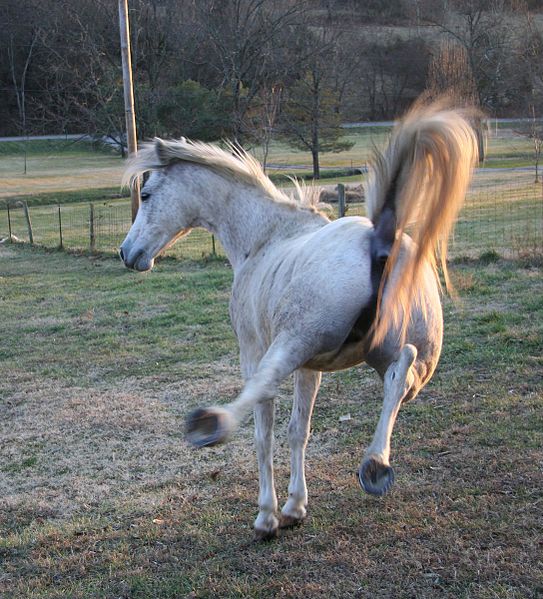It’s a dirty job, but someone has to do it. I’m referring, of course, to the dreaded task of sheath cleaning. Whether your vet does it, or you slap on the latex gloves yourself, cleaning your male horse’s sheath or your mare’s udders are important aspects of horse health care that shouldn’t go overlooked. For tips on how to safely and effectively clean your horse’s sheath, check out this informative article by Cheryl Sutor.
If you need some lighthearted motivation to help you get the job done, just sing this song to the tune of “Hello Muddah, Hello Fadduh (A Letter From Camp”:
How’s it hangin’?
So much cleaner.
Aren’t you glad I
Washed your wiener?
I’ll admit it’s
Kinda creepy
That I had to stick my arm up in your pee-pee.
It was sticky.
It was gunky.
It felt icky.
It smelled funky.
It was cruddy,
It was crusty,
When you stuck it out, it creaked like it was rusty.
After half an
Hour of toilin’
And squirtin’ baby oil in,
You’re as fresh there
As a daisy,
Either this means that I love you or I am crazy!
This Week in Horse Health News
Scientists study horses’ baby blues: Researchers from universities of Illinois and Georgia have determined that while blue-eyed horses and brown-eyed horses have equal chances of developing ocular diseases, horses with blue eyes are more likely to develop ocular squamous cell carcinoma (SCC). [Horsetalk]
“Gait Keeper” gene responsible for smooth rides worldwide: An international team of geneticists has determined that “gaitedness” in horses was originally caused by a mutation in a single horse’s DMRT3 gene (now called the “gait keeper” gene). The trait for smooth, ambling gaits was then bred into subsequent generations, resulting in today’s wide array of easy-gaited breeds. [The Horse]
How to prevent hoof distortion in Thoroughbreds: Rood and Riddle’s Scott E. Morrison, DVM provides some tips for helping Thoroughbreds (and other performance horses mainly kept in stalls) maintain healthy hooves during idle hours. Hoof capsule distortion is the imbalance of misshapen hooves, such as flares, cracks, and collapsed heels; providing arch support during stall rest or other long periods of immobility can help prevent and alleviate these issues. [Fran Jurga’s Hoof Blog]
Diagnosis brings drama to St. Louis carriage conflict: After St. Louis health director Pam Walker vocalized her intention to ban carriage rides in the city, veterinarian Mark Cassells determined that Moose, the horse that initially sparked Walker’s concern, was healthy and fit to work. This diagnosis conflicted with city veterinarian Sarah Frei’s earlier assessment that the horse suffered from heaves. For more information regarding the carriage controversy, catch up at the [St. Louis Post-Dispatch]
University of Guelph offers large animal rescue course: From emergency preparedness procedures to the behaviors of fearful horses, the Technical Large Animal Emergency Rescue (TLAER) and Ontario’s University of Guelph will train horse owners, law enforcement, veterinarians, and other first responders how to safely and effectively handle and prevent emergencies around horses. [The Horse]




















